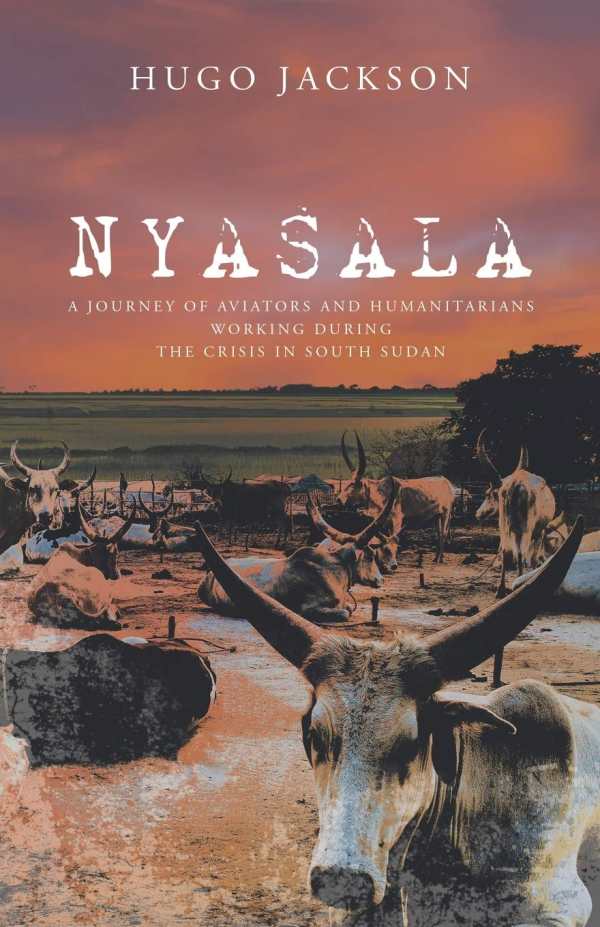Nyasala
A Journey of Aviators and Humanitarians Working During the Crisis in South Sudan
The daily realities of war-torn Sudan are recorded in the detail-heavy novel Nyasala.
Hugo Jackson’s novel Nyasala focuses on the struggles and persistence of a few exemplary individuals within Sudan’s complicated war zones.
As the story begins, aide pilots with a busy day ahead of them find themselves stuck in a Sudanese traffic jam. They have more success once they reach the airfield, where they are able to take off on a supply and rescue mission without complication. As they await the next day’s tasks over drinks at a halfway point, young Nyasala, stuck in a village to the north, crouches among the bodies and desolation left by a recent attack. When morning breaks, she and a fellow survivor head out in search of help; they have little clue that someone is searching for Nyasala, too.
At first, evocative situating details, like a dust storm in the early morning heat and the smells and sounds of Nyasala’s torched village, are used to establish atmospheres, but such scenes are fast interrupted by dry explanations of aviation procedures and bureaucratic failures. The central narrative struggles to assert itself amid this morass. Sudden shifts between Nyasala’s harsh circumstances and the mundane details of the pilots’ work life, like moments when they marvel over the miracle of GPS systems or discuss the weather, are off-putting.
Transitions between scenes are also jarring, as when the story moves from the pilots’ car into an office environment, or between pilots on separate missions, without segues. Daily procedural discussions and distracting presentations of background information exclude the audience from the action. Within the story, even trauma is often addressed in passing, including instances of starvation and rape; such presentations are realistic, but are too swift and detached to generate real pathos.
A flood of characters is introduced early on, most in terms of their working effectiveness, ordinary backstories, and past acts of heroism. In general, the men are portrayed as heroic and the women as naïve and wanton; declarations of the pilots’ virtue are undermined by their lasciviousness. The book’s sex scenes are gratuitous.
Conversations between characters seem orchestrated to deliver information to the audience; few interactions propel the story forward. Agreement issues, odd similes, tense shifts, punctuation and spelling errors, malapropisms, and missing words are also interruptive to the reading experience.
It is at first unclear whom the narrative intends to focus on; eventually, a handful of pilots and Nyasala emerge as the book’s leads, though their stories are still frenzied and skipped between. Though she is ostensibly at the core of the drama, Nyasala most often functions as a witness to terrible events; not enough room is given to developing her personality, or her story, beyond what’s going on around her. After all of the desperation and uncertainty that she faces throughout the novel, the conclusion to her story is vague and lackluster.
Most concerned with capturing the everyday struggles of aide workers and wartime survivors in Africa, Nyasala’s story of crisis and rescue is sublimated by its many realistic details.
Reviewed by
Michelle Anne Schingler
Disclosure: This article is not an endorsement, but a review. The publisher of this book provided free copies of the book and paid a small fee to have their book reviewed by a professional reviewer. Foreword Reviews and Clarion Reviews make no guarantee that the publisher will receive a positive review. Foreword Magazine, Inc. is disclosing this in accordance with the Federal Trade Commission’s 16 CFR, Part 255.

